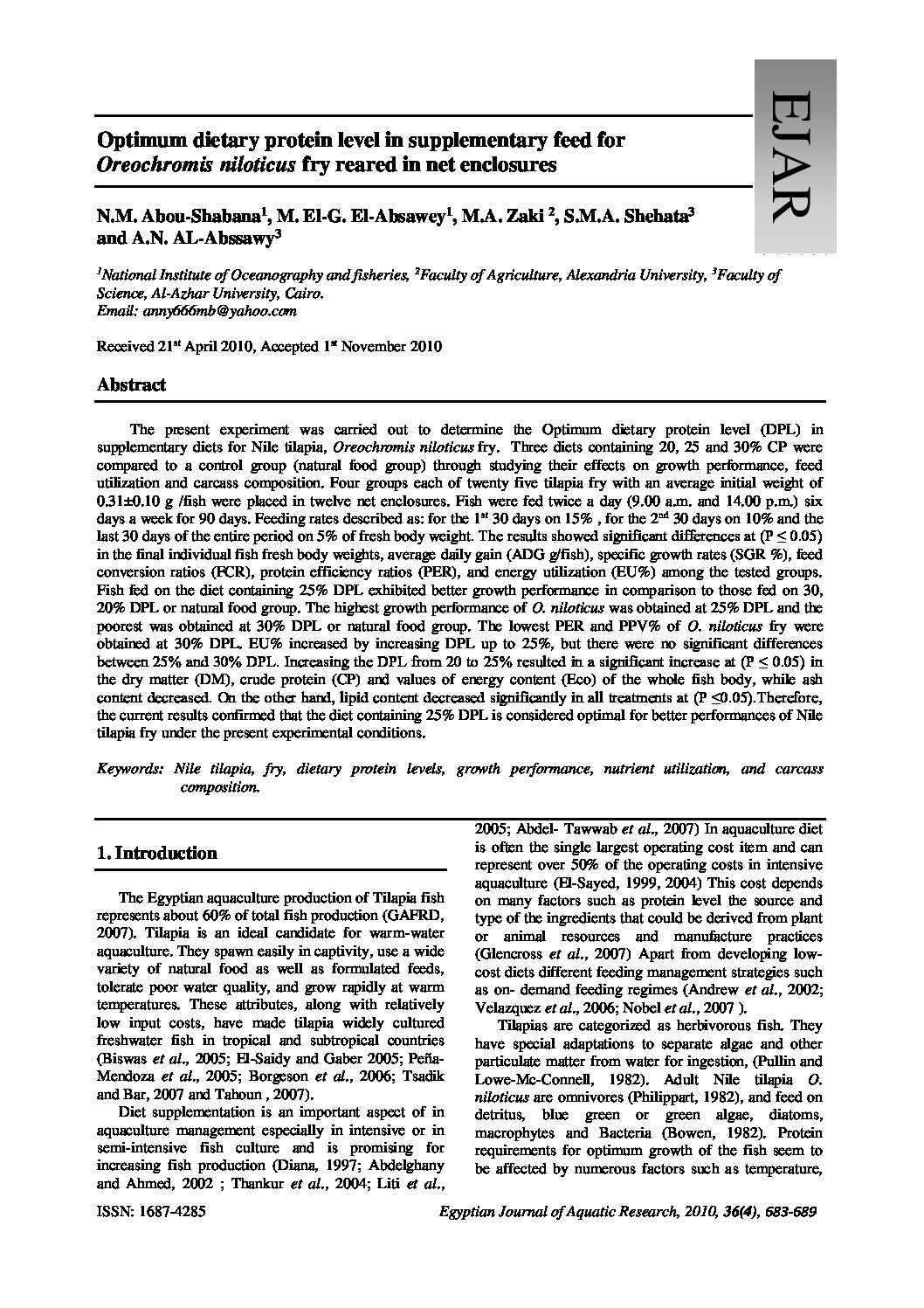Categories
vol-36Optimum dietary protein level in supplementary feed for
Oreochromis niloticus fry reared in net enclosures
N.M. Abou-Shabana1
, M. El-G. El-Absawey1
, M.A. Zaki 2
, S.M.A. Shehata3
and A.N. AL-Abssawy3
1National Institute of Oceanography and fisheries, 2Faculty of Agriculture, Alexandria University, 3Faculty of
Science, Al-Azhar University, Cairo.
Email: [email protected]
Received 21st April 2010, Accepted 1
st November 2010
Abstract
The present experiment was carried out to determine the Optimum dietary protein level (DPL) in
supplementary diets for Nile tilapia, Oreochromis niloticus fry. Three diets containing 20, 25 and 30% CP were
compared to a control group (natural food group) through studying their effects on growth performance, feed
utilization and carcass composition. Four groups each of twenty five tilapia fry with an average initial weight of
0.31±0.10 g /fish were placed in twelve net enclosures. Fish were fed twice a day (9.00 a.m. and 14.00 p.m.) six
days a week for 90 days. Feeding rates described as: for the 1st 30 days on 15% , for the 2nd 30 days on 10% and the
last 30 days of the entire period on 5% of fresh body weight. The results showed significant differences at (P ≤ 0.05)
in the final individual fish fresh body weights, average daily gain (ADG g/fish), specific growth rates (SGR %), feed
conversion ratios (FCR), protein efficiency ratios (PER), and energy utilization (EU%) among the tested groups.
Fish fed on the diet containing 25% DPL exhibited better growth performance in comparison to those fed on 30,
20% DPL or natural food group. The highest growth performance of O. niloticus was obtained at 25% DPL and the
poorest was obtained at 30% DPL or natural food group. The lowest PER and PPV% of O. niloticus fry were
obtained at 30% DPL. EU% increased by increasing DPL up to 25%, but there were no significant differences
between 25% and 30% DPL. Increasing the DPL from 20 to 25% resulted in a significant increase at (P ≤ 0.05) in
the dry matter (DM), crude protein (CP) and values of energy content (Eco) of the whole fish body, while ash
content decreased. On the other hand, lipid content decreased significantly in all treatments at (P ≤0.05).Therefore,
the current results confirmed that the diet containing 25% DPL is considered optimal for better performances of Nile
tilapia fry under the present experimental conditions.
Keywords: Nile tilapia, fry, dietary protein levels, growth performance, nutrient utilization, and carcass
composition.







